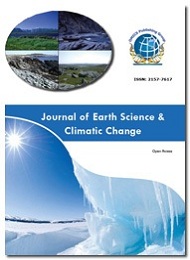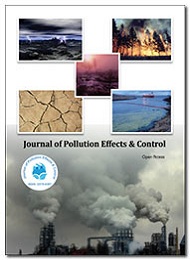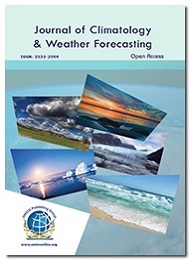Theme: Building awareness of climate change to educate the future
Climate Congress 2020
Climate Congress 2020 regards each one of the individuals to go to the "9th World Climate Change Congress" amidst September 21-22, 2020 Kyoto, Japan which melds brief keynote presentations, speaker talks, Exhibition, Symposia, Workshops, Speaker sessions.
Climate Congress 2020 will join world-class professors, scientists, researchers, students, environmentalist, to discuss methodology to reduce global warming, climatic change and its effect, pollution and recycling. Climate Conference 2020, Climate Science Conference 2020, Environmental Meetings 2020 are planned to give various information that will keep helpful scientists next to each other of the issues impacting the expectations, finding and solution for climatic change and its effect. The assembling of this event will be dealt with around the subject “Building awareness of climate change to educate the future".
Conference Series llc ltd deals with a meetings of 1000+ Global Events thorough of 300+ Conferences, 500+ Upcoming and Previous Symposiums and Workshops in USA, Europe and Asia with sponsorship from 1000 more sensible social requests and disseminates 700+ Open get to journals which contains more than 30000 unmistakable personalities, reputed specialists as article board people.
Key Figures of Climate Congress 2020 | Kyoto, Japan
This international conference provides the opportunity for climate scientists, professors and researchers from all over the world to gather and learn the latest advances in the field of climate and environmental science and to exchange scientific ideas and experiences in a distinctive environment.
2 days of scientific exchange
200+ abstracts submitted
30+ scientific sessions
80+ international expert faculty members
100+ environmental professionals
Climate Congress 2020 is the annual meeting conducted with the support of the Organizing Committee Members and members of the Editorial Board of the supporting climate related journals and is aimed at helping support environmental professionals i.e. climate scientist, meteorologists, professors, researchers to deliver the best solution possible to environmental change.
Why to attend?
With people from around the world focused on getting some answers concerning Climatic Congress, this is one of the opportunities to accomplish the greatest accumulation of individuals from different universities, associations, research centres etc. This Climate congress conference in the year 2020 at Kyoto, Japan will coordinate, disperse information, and meet with recurring pattern and potential investigators and get name affirmation at this 2-day event. Broadly acclaimed keynote & plenary speakers, the most recent frameworks, methodologies, and the most current updates in Global Warming and climate science field are indications of this conference. This World Climate congress or rather all climate related gatherings, climate congress meetings and climate congress will help in frameworks organization, B2B uniting amidst specialists, researchers and academicians.
The main objective of the conference is to bring together leading academicians, scientists, researchers, graduate students and business entrepreneurs from the field of Climate Sciences, Meteorological Sciences, Atmospheric Sciences, Environmental Sciences, Geological Sciences and others whose interest is to promote Environmental Sciences education and awareness about Climate Change at the school, college and university levels, and among the general public.
Track 1: Climate change and Climatology
Climatology is the scientific study of climate, defined as weather patterns that have been averaged over a given period of time to obtain a consistent pattern of the expected atmospheric conditions. Climatology includes the regional and systemic studies of atmospheric conditions i.e. weather and climate. Dynamic climatology is the study of large-scale patterns and how they can be used to understand global weather. Climate indices are large-scale weather patterns that are consistent and measureable. The goal of an index is to combine a number of factors into a large, generalized description of either air or ocean phenomena that can be used to track the global climate system.
-
Climate Change & Climatology
-
CO2 Responsible Climate Change
-
Sustainability & Climate Change
Track 2: Global Warming Effects and Causes
Its consequences for creatures and on farming are in reality startling, and the impacts on the human populace are significantly scarier. The actualities about a worldwide temperature changes are regularly discussed in legislative issues and the media, however, sadly, regardless of the possibility that we differ about the causes, an unnatural weather change impacts are genuine, worldwide, and quantifiable. Right around 100% of the watched temperature increment in the course of the most recent 50 years has been because of the expansion in the climate of greenhouse gas fixations like water vapor, methane and ozone. Greenhouse gases are those gasses that add to the greenhouse impact.
-
Effects of global warming
-
Impacts of global warming
-
Global Warming Causes, Effects and Solutions
-
Consequences of Global Warming on Human Health
Track 3: Ecosystems and Ecology
Climate change is a transforming ecosystems on an extraordinary scale, at an extraordinary pace. As each species responds to its environment changes, its interactions with the physical world and the organisms around its change too. Climate change is happening on a global scale, but the ecological impacts are often local and differ from place to place. Living things are closely connected to their physical surroundings. Even small changes in the environment like temperature of the air, the moisture in the soil, or the salinity of the water can have significant effects. Each species is affected by such changes. Shifts in species’ ranges and shifts in phenology are the important types of ecological impacts of climate change.
-
Forest ecology & biodiversity
-
Agroecology
Track 4: Climate and Energy Policy
Emissions of greenhouse gases have a global impact, unlike some other forms of pollution. Whether they are emitted in Asia, Africa, Europe, or the Americas, they rapidly disperse evenly across the globe. This is one reason why efforts to address climate change have been through international collaboration and agreement. Although climate change agreements emphasising carbon emission reduction have been reached through international approaches, the policy measures to meet the obligations and objectives set by such agreements have been implemented at the national or regional level.
-
Space Monitoring of Climate Variables
-
Climate Change Economics
Track 5: Climate disasters or climate hazards
Climate disasters or climate hazards are dangerous weather phenomena that threaten life and property. Climate change projections show that there will be continuing increases in the occurrence and severity of some extreme events by the end of the century, while for other extremes the links to climate change are more uncertain. Disaster Risk Reduction aims to reduce the damage caused by natural hazards like earthquakes, floods, droughts and cyclones, through an ethic of prevention. Disaster risk reduction includes disciplines like disaster management, disaster mitigation and disaster preparedness, but DRR is also part of sustainable development. In order for development activities to be sustainable they must also reduce disaster risk.
-
Tsunami and floods
-
Drought and heatwaves
-
Forest fire events
-
Agriculture issues
-
Coal-Fired
-
Warming Gulf of Marine Waters
-
Earthquakes
Track 6: Climate Change Solutions
Reduction of greenhouse gas emissions is the important key to solving global climate change. A major way these emission of gases into the atmosphere is when the people burn coal, oil, and natural gas for energy. Eliminating the burning of coal, oil and eventually natural gas helps in reducing the Global warming. The easiest way to reducing the greenhouse gas emissions is simply to use less stuff. The other solution is to be energy efficient. We have to think about climate when making purchases. Purchasing energy-efficient gadgets can also save both atmosphere and money. Afforestation and forest management is one of the best way of climate change solution. Coal to gas fuel switching other factor be done as a solution to climate change.
-
Afforestation and forest management
-
greenhouse gas emissions
Track 7: Climate Refugees
Climate refugees are the people who leave their homes and communities because the effects of climate change and global warming. Climate refugees also known by dozens of other names, including environmental refugees, Eco-migrants, environmental migrants and environmental displaces. Climate refugees belong to a large group of immigrants known as environmental refugees. Environmental refugees include immigrants forced to leave because of natural disasters such as tsunamis and volcanoes. Environmental refugees are a particularly difficult problem for governments and policy-makers to cope with due to the variety of natural disasters that can have dramatic impacts on the forced migration of people.
-
Greenhouse gases
-
Climate change feedback
-
Climate models
Track 8: Climate and Energy Policy
Unlike some other forms of pollution, Emissions of greenhouse gases have a global impact; they rapidly disperse evenly across the globe. This is one of the reason why efforts are address change of climate have been through international collaboration and agreement. Agreements of climate change have the potency of carbon emission reduction have been reached through international approaches and the policy measures to meet the objectives and obligations set by such agreements have been implemented at the regional or national level. Countries which are developed will need to reduce more between 80 % and 95 % by 2050. Advanced developing countries with large emissions will have to limit their emission growth.
-
Observed temperature changes
-
Physical drivers of climate change
Track 9: Renewable Energy to Mitigate Climate Change
Renewable energy is energy that is generated from natural processes that are continuously replenished. This includes sunlight, geothermal heat, wind, tides, water, and various forms of biomass. This energy cannot be exhausted and is constantly renewed. Renewable energy plays an important role in reducing greenhouse gas emissions. When renewable energy sources are used, the demand for fossil fuels is reduced.Renewable energy facilities generally require less maintenance than traditional generators. Their fuel being derived from natural and available resources reduces the costs of operation. Even more importantly, renewable energy produces little or no waste products such as carbon dioxide or other chemical pollutants, so has minimal impact on the environment.
-
Disposal methods
-
Recycling
-
Re-use
-
Liquid waste-management
-
Legislation
-
Government-mandated demand
-
Recyclates
Track 10: carbon Cycle
Carbon is a component, something that can't be separated into a less difficult substance. Carbon mixes are available in living things like plants and creatures and in non-living things like rocks and soil. Carbon mixes can exist as solids, liquids or gasses. Carbon is frequently alluded to as the "building block of life" since living things depend on carbon and carbon compounds. Carbon is exchanged, or "cycled" among Earth's seas, environment, biological system, and geosphere. It is an imperative part of many chemical processes. It is available in the air fundamentally as carbon dioxide additionally as different less inexhaustible yet climatically critical gasses, for example, methane.
Track 11: Sustainability and Climate Change
Climate change is just a long-term issue. It is going on today, and it involves instabilities for policy makers attempting to shape the future. Sustainability is no longer just a fashionable word. It is an organized way to achieving a holistic and triple bottom line growth. Apart from risk identification and mitigation, as well as a significant improvement in the efficiency of processes and systems for optimization of resources, the other proven tangible and intangible benefits of sustainability include its positive impact on employees’ morale, an organization being recognized as an employer of choice, supply chains being motivated to adopt leading practices and consumers being educated on the importance of responsible behavior.
Track 12: Climate Change Economics
Climate change economics deals with the fundamentals of economic theories and its concepts, climate change impacts on global economies and its markets, costs, quantifying disruptions related with climate change, climate variability and extreme events, accounting for the economics and future prices of energy, air, water and other natural resources. cost and benefit analysis of climate action ,collecting and integrating information from a different sources.
-
Climate variability
-
Ocean-atmosphere variability
-
Life
Track 13: Carbon Capture and Sequestration
Carbon sequestration is a set of technologies which can greatly reduce carbon dioxide emissions from new and existing coal- and gas-fired power plants and large industrial sources. Carbon sequestration includes: Capture of CO2, Transport of the captured and compressed CO2 and Underground injection and geologic sequestration of the CO2 into deep underground rock formations. It is important because it could play an major role in reducing greenhouse gas emissions, while enabling low-carbon electricity generation from power plants and it can significantly reduce CO2 emissions from coal- and natural-gas-fired power plants, as well as certain industry types such as natural gas and ethanol processing plants.
-
Seaweed farming
-
Carbon farming
-
Wetland restoration
Market Analysis
The 'Securities and Climate Change: State of the Market 2018' report is an inside and out examination of the atmosphere adjusted and named green security markets. The Report evaluates all bonds where continues are being utilized to fund low carbon and atmosphere flexible foundation. In this report, we reveal bonds that fund ventures perfect with a 2-degree change way as opposed to speculations that are imperceptibly naturally advantageous. This takes a sign from the Paris COP21 Agreement that speculations ought to be in accordance with the lofty discharge decrease direction expected to accomplish a quick progress to a sub-2-degree Celsius world. The 2017 report additionally has an emphasis on urban communities, with contextual investigations recognizing best practice and open doors for green city securities. Atmosphere back from open assets is anticipated to increment to US$66.8 billion by 2020, with extra subsidizing anticipated that would originate from the private segment. At the April 2017 Green Climate Fund executive gathering eight new undertakings were endorsed esteemed at US$755 million, extending from hydropower flexibility in Tajikistan to ground water revive and water system to guarantee nourishment security in Orissa, India. This brings the aggregate ventures to 43, with US$2.2 billion originating from the Green Climate Fund, and extra subsidizing from co-financing raises the aggregate to US$7.3 billion. Co-financing is a basic part of the Green Climate Fund, with an objective of US$100 billion by 2020 — originating from open and private sources.
While climate finance has reached record levels, action still falls far short of what is needed under a 1.5 ËšC scenario. Estimates of the investment required to achieve the low-carbon transition range from USD 1.6 trillion to USD 3.8 trillion annually between 2016 and 2050, for supply-side energy system investments alone (IPCC 2018), while the Global Commission on Adaptation (GCA 2019) estimates adaptation costs of USD 180 billion annually from 2020 to 2030.
9th World Climate Change Congress scheduled at Kyoto, Japan during 21-22 September, 2020
The “International Conference on “8th World Climate Congress” hosted by conference series with the theme, “Exploring the Foster Innovations in Obesity and Weight loss” was successfully executed during May 10-11, 2019 at Bangkok, Thailand .The conference offered a unique opportunity to investigators across the globe in order to meet, explore, network and perceive new scientific innovations. The conference received commendable and active participation was received from the Editorial Board Members of OMICS Group Journals as well as from the global scientists, Professors, Academicians, Researcher Scholars and students from diverse fields of climate.
The conference was initiated with the Honourable presence of the Keynote forum. The list includes:
- Grid storage consideration for high penetration of wind and solar power by
James Robert Doyle, Macalester College, USA
- Ecological assessment on urban eco-security and strategy for the resilience to tackle with climate change by Xiangrong Wang, Fudan University, China
- Alternative recovery methods of heavy oil as an option to reduce greenhouse gas emission by Tayfun Babadagli, University of Alberta, Canada.
Conference Highlights
- Climate change and Climatology
- Global Warming Effects and Causes
- Ecosystems and Ecology
- Climate and Energy Policy
- Climate disasters or climate hazards
- Climate Change Solutions
- Climate Refugees
- Climate and Energy Policy
- Renewable Energy to Mitigate Climate Change
- carbon Cycle
- Sustainability and Climate Change
- Climate Change Economics
- Carbon Capture and Sequestration
To share your views and research, please click here to register for the Conference.
To Collaborate Scientific Professionals around the World
| Conference Date | September 21-22, 2020 | ||
| Sponsors & Exhibitors |
|
||
| Speaker Opportunity Closed | |||
| Poster Opportunity Closed | Click Here to View | ||
Useful Links
Special Issues
All accepted abstracts will be published in respective Our International Journals.
- Journal of Earth Science & Climatic Change
- Journal of Climatology & Weather Forecasting
- Journal of Pollution Effects & Control
Abstracts will be provided with Digital Object Identifier by







